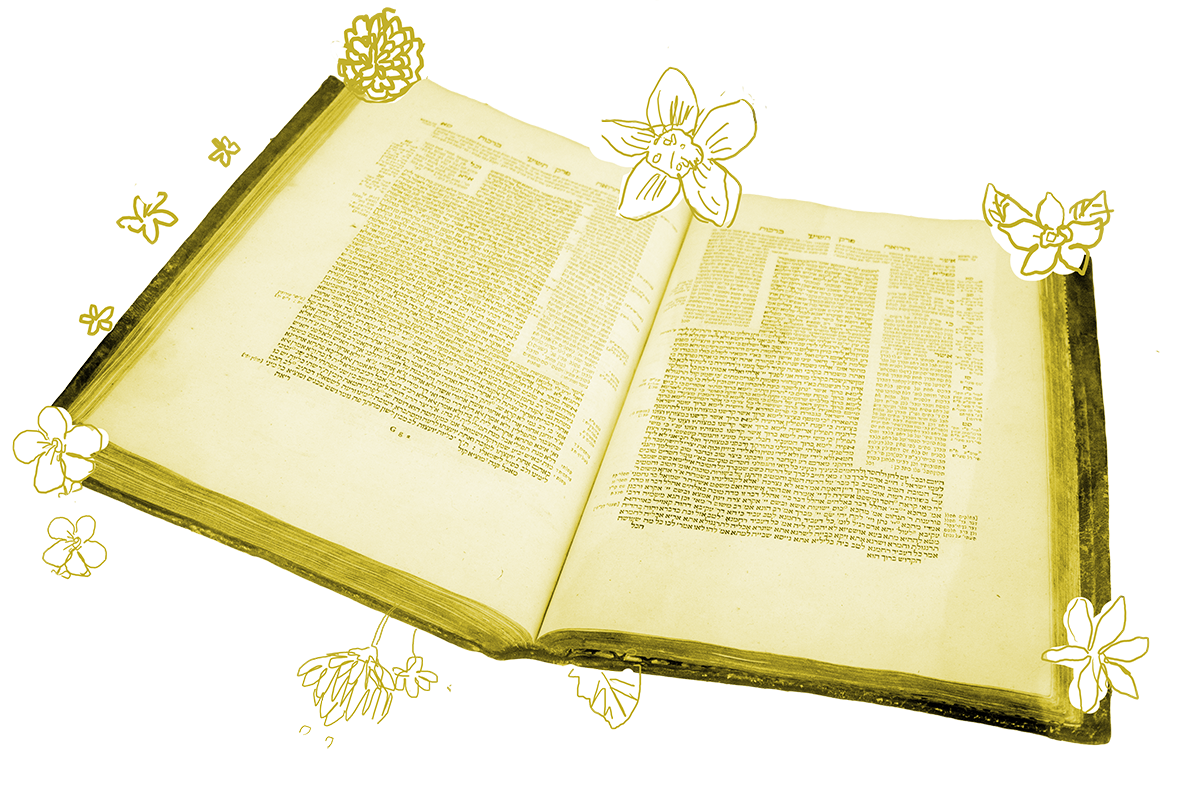Virtually the entirety of today’s daf is taken up with a discussion about the animals offered by the high priest on Yom Kippur. According to the rabbis, the high priest is meant to slaughter a bull and bring its blood with him into the Holy of Holies. On yesterday’s daf the question was asked: What happens if the high priest slaughters the bull and then dies before he can enter the Holy of Holies? Is a new sacrifice needed or can the high priest who takes his place bring the blood of the animal slaughtered by his now-deceased predecessor?
At first blush, this is a fairly picayune argument of the type we have seen many times already. But folded into this argument is a fascinating discussion about the exact nature of the bull offering, a discussion that in some ways gets to the heart of the meaning of these rituals of atonement.
In one of many attempts to resolve the question, the Gemara posits the following solution:
And let him derive the answer to this problem from the fact that it is a sin-offering whose owners have died. After all, the bull of the first high priest is a sin-offering and its owner has died. Since there is a principle that a sin-offering whose owners have died is left to die, this should resolve the dilemma.
With your help, My Jewish Learning can provide endless opportunities for learning, connection and discovery.
The Talmud suggests that the bull offering is a type of offering we know about: the individual sin-offering. That type of offering has a known rule: If a person designates an animal as a sin-offering and then dies, the animal is not slaughtered. If the bull offering is indeed a type of sin-offering, the analogy should be clear: The high priest cannot take the blood of a bull slaughtered by a different high priest into the Holy of Holies since individual sin-offerings, once designated or slaughtered, cannot be used by anyone else.
But what if the bull offering of the high priest is not, in fact, an individual sin-offering at all?
Ravin bar Rav Adda said to Rava: Your students say that Rav Amram said that the sin-offering bull of the high priest is a communal sin-offering, as the high priest brings it both on his own behalf and for his fellow priests, and a communal sin-offering is not left to die.
According to this opinion, the Yom Kippur offering is not an individual sin-offering, but a communal sin-offering. As Rashi explains, such offerings are brought “for him [the high priest], and for his brothers the priests.” As such, it would seem that another high priest could in fact bring the blood of the slaughtered bull into the Holy of Holies, since the bull was slaughtered not for the first high priest alone, but for the entire community.
From here, there are many talmudic twists and turns as the rabbis debate the exact nature of this offering. Arguments are offered that the bull is, in fact, an individual offering, and arguments are offered that it’s communal. The Talmud does not definitively decide the issue, but the kernel of the disagreement is still profoundly important to understanding the meaning of the ritual itself. At its core, is the high priest atoning for himself or for others as well?
Our conception of Yom Kippur today rests somewhat uneasily on this tension as well. Yom Kippur is meant to be a time of cheshbon hanefesh, a true accounting of one’s faults and shortcomings. This is by definition an act of individual soul-searching whereby we admit our faults and seek to improve upon them.
But the prayers we say on Yom Kippur — most prominently the Viddui, the alphabetized confession that we repeat several times over the course of the day — are expressed in the plural: We have sinned, we have betrayed, and so on. We join our individual guilt to collective failings, almost as if to say, if I atone while my community continues to sin, what good is my individual salvation?
So are our prayer offerings on Yom Kippur individual or communal? The answer, as our page today makes clear, is yes.
The rabbis on today’s daf do not resolve this dilemma. Nor do we when we stand before God each Yom Kippur. We offer our own efforts at redemption, and we join those efforts with those around us. The individual and communal are inexorably linked, and as we see our daf today, it can be hard, perhaps even impossible, to tell the one from the other.
Read all of Yoma 50 on Sefaria.
This piece originally appeared in a My Jewish Learning Daf Yomi email newsletter sent on May 31st, 2021. If you are interested in receiving the newsletter, sign up here.



